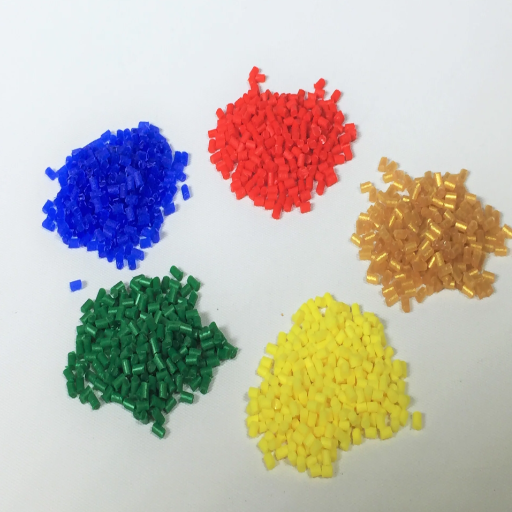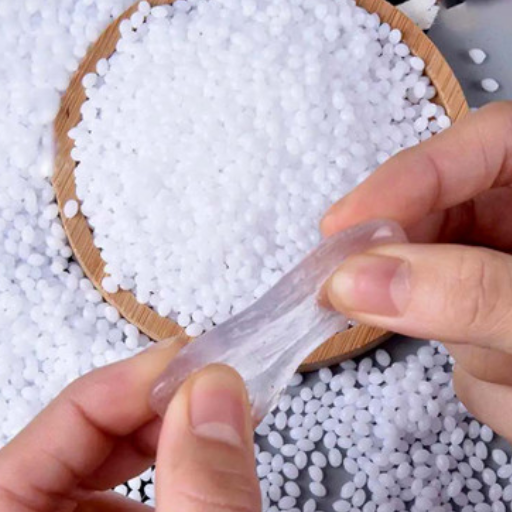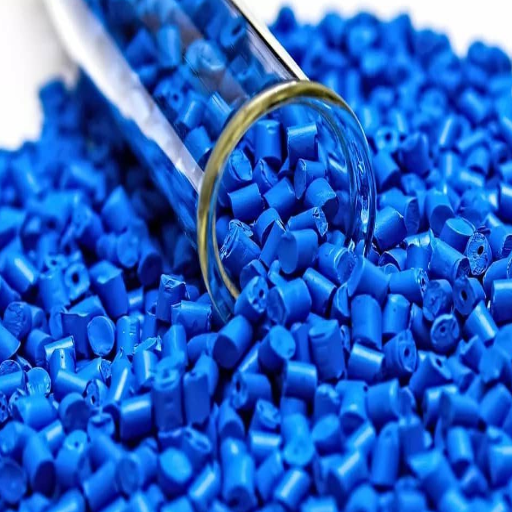Acrylonitrile Butadiene Styrene can be an ultradurable and strong thermoplastic polymer known as ABS. Due to the sheer mechanical properties of ABS, it is used in modern-day vehicles, electrical components, and even aerospace components. In this blog post, we will talk about coursework writing services, the composition and structure of acrylonitrile butadiene styrene, its mechanical properties, and its advantages over other materials that have made it come to the fore. Also, its processing techniques, innovations, and eco-friendliness will be discussed. Anyone interested in knowing this polymer’s application or is a material engineer or product designer will find this article helpful as it gives a thorough understanding of the polycarbonate and helps eliminate the mystery surrounding this polymer in the industry today.
What exactly is ABS plastic, and how is it made?

Acrylonitrile Butadiene Styrene (ABS) is another low-cost engineering material with excellent impact-resistant properties. The material has Acrylonitrile, butadiene, and styrene as its main components, and they have individual functions when combined. For instance, Acrylonitrile provides rigidity and chemical resistance, butadiene improves the impact and toughness strength, whereas styrene has poor inter-molecule strength but makes the material easier to process.
The transformation of ABS begins with the polymerization of monomers through either emulsion or continuous mass polymerization methods. Within this phase, the precise percentage of the three components can be altered to fine-tune the material properties for targeted functionalities. As the two characterizations of torsional strength and density suggest, ABS is sensitive to molding, which is one of the reasons for its extensive use in automotive components, consumer electronics, and even 3D printing. Once treated, ABS material regains its value as an essential component in modern industry as it finds the usage of being recast multiple times.
Understanding the composition of ABS (Acrylonitrile Butadiene Styrene)
Polystyrene, polyacrylonitrile, and polybutadiene are the three components of the structure, which comprise its main monomers and are primarily responsible for the physical tendencies and overall structure of the material. Due to its three main components, ABS maintains a significantly favorable impact and chemical inhibition levels. The first is arylonitrile, which improves thermal endurance while preserving environmental stability. Butadiene creates some flexibility in harsh policies regarding the company’s physical appearance and marketing. Styrene guarantees thickness consistency during production and provides a lovely gloss finish, increasing marketing appeal for clients’ products.
Ranging between 210-240°, ABS is thermally stable and mixes easily. As a result, it is utilized for injection molding and additive manufacturing techniques such as 3D printing. Its about 1.04 g/cm³ density further supports its lightweight properties for impact resistance. In addition, it joins polycarbonate and polyurethane for electronic enclosure usage, which has no electrical conductivity and provides excellent insulating properties. In addition, it also degrades when placed in oils or acids or by physical force.
Commercially, ABS is produced through polymer emulsions or continuous mass polymerization techniques. Depending on the requirements, assemblers can easily change the monomer ratio to the correct formulation of ABS suited for applications such as toughness, heat deflection, or machinability requirements. As a result, ABS has become a common material for car trims, protective gear, and toys, including building bricks like LEGO bricks and household equipment. Its recyclability and range of applications underline its importance in an engineering and manufacturing ecosystem.
The manufacturing process of ABS plastic
Mass polymerization and emulsion polymerization are two significant approaches to producing ABS plastic. In the case of emulsion polymerization, the three monomers, which include styrene, acrylonitrile, and butadiene, are reacted in the presence of water, resulting in the formation of very high, uniform particles that have a good level of gloss and stability. This is particularly the case in the construction of applications where a smooth surface is desired. On the other hand, continuous mass polymerization is performed in a controlled nonaqueous system, simplifying scaling the process up and modifying the mechanical properties of the resultant polymer.
In the production process, a key step is combining the three components, including acrylonitrile for climax resistance and formability, butadiene for toughness, and styrene for rigidity and moldability. Even once polymerized, modifiers and additives can be used within the limits of the properties required without altering the material’s structural integrity, providing for flame retardancy, UV resistance, and increased dimensional stability. Usually, the material subjected to polymerization is subjected to extrusion, which leads to the formation of pellets, making it easier for the material to be processed by injection molding or other methodologies. The apparent advantages of production technology and the scope of customization explain the wide range of applications of ABS in various industries.
Key characteristics that define ABS as a thermoplastic
The copolymer ABS is a thermoplastic material with a unique strength, toughness, and flexibility combination. Its high impact resistance makes it effective in many applications requiring endurance. Also, since it contains the acrylonitrile group, ABS has good chemical resistance, thermal stability, and sound processing characteristics. Its low density and good shaping or casting properties guarantee its extensive industrial use. Such characteristics make ABS necessary for automobile parts and any electronic device.
What are the unique properties of ABS plastic?
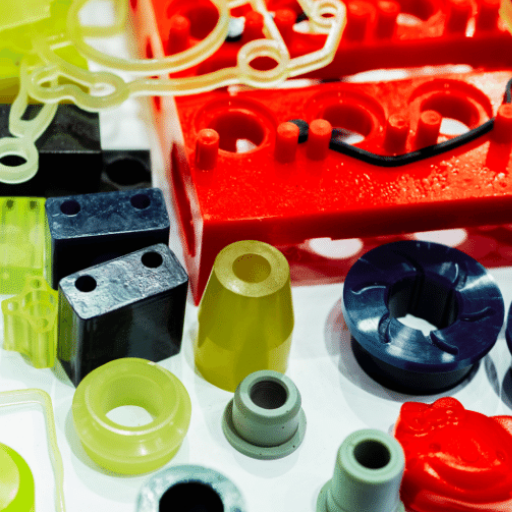
Acrylonitrile Butadiene Styrene, or ABS, is one of the most valuable materials you can come across in the modern world. Its ability to withstand high impacts and not quickly become deformed can survive harsh mechanical abuse while lasting an extended period due to its rigidity and impressive structural strength. It can undergo high temperatures or chemical reactions due to its unparalleled tolerance and takes the opportunity with six is to one against outgunning the competition and performing flawlessly. It also possesses superior surface finishing features, allowing detailed molding and fabulous designs for consumers, especially in the context of automotive and electronics, which are the most demanding industries for weight shedding due to their lightweight nature.
Exploring the mechanical properties of ABS mat
Such promising aspects and traits within its structure allow it to act as a composite with relatively high strength and tensile properties. As such, it is widely used across various industries and sectors. Additionally, it’s believed that withstanding forces between the range of 29 to 44 MPa will be a piece of cake, adding to its structural durability under mechanical load. The best part about the material is that there’s minimal to no deformation, which means it has excellent impact resistance. Additionally, it does not weaken even in the most volatile temperatures, which allows you to work confidently under extreme temperatures and stress. Furthermore, it also has a high degree of elasticity combined with minimal rigidity, which brings about a flexural rate of 2.7 to 1.7 GPa, allowing for high resiliency and stability.
Moreover, ABS is characterized by exceptional dimensional stability, meaning its shape and strength are preserved during extended usage, even when heat is applied. It is hard and has good abrasion resistance, thus allowing the bushings to take heavy abuse from repetitive motions or contact. To sum up, the mechanical characteristics of ABS are obviously up to industrial and consumer uses with rigid and strict requirements.
ABS in the automotive industry: Parts and components
Acrylonitrile Butadiene Styrene (ABS) has been applied in the production of automobiles by various firms due to its favorable mechanical characteristics, low weight, and competitive price. Typical uses include the fabrication of inside parts such as the instruments’ boards, door panels, or seat backs, in which rigidity and impact resistance are used to ensure the safety and durability of the product. ABS is frequently utilized in trim parts, mirror housings, and cover shields as it helps withstand various environmental conditions while maintaining sufficient strength. In addition, ABS is easily shaped and finished, which enables the manufacture of complicated three-dimensional shapes vital for automotive components. It is precisely because of these features and the durability that ABS is necessary for many parts and components in an automobile.
The role of ABS plastic in 3D printing and prototyping
3D printing and prototyping ABS is a reasonable practice as it combines exceptional durability with a certain degree of flexibility and ease of use. It is my favorite because I prefer its strength and characteristics as a material. It can withstand impacts and is preferred for functional prototypes and end-use parts. It is also easy to process such that sanding, drilling, or painting prototypes is possible after machining. One of the properties that stands out for plastics with high melting temperatures is that they are stable at moderate heating. It easily dissolves in acetone, making it a well-smoothed finished product. However, because 3D printing ABS requires precise ventilation and temperature controls due to extruded fumes, mixing ABS in 3D printing is a bit complex. Because they are reasonably priced while adapting well to the design requirements, one can use ABS in rapid prototyping applications, making it an ideal material for use in the automobile, aerospace, and consumer goods industries.
Consumer goods and electronics made from ABS
ABS (Acrylonitrile Butadiene Styrene) is a widely utilized material in producing plastic items and electronic goods, owing to its excellent impact resistance, structural characteristics, and ease of manufacture. It has applications in manufacturing rigid medical devices and constructing durable articles for household use, such as vacuum cleaners, kitchen gadgets, and storage containers. Due to its low density but strong properties, it is also beneficial as protective housing in remote controls, computer keyboards, and gaming consoles. Additionally, considering the possibility of injection or 3D stamping of ABS, it is possible to produce many splined parts of high quality in bulk or, for one instance, with a developed shape and exponential accuracy; therefore, the material has found its application in both picture and bulk production. Its price and fitness for use in modern technologies are other important factors that account for its extensive use in this industry.
How does ABS plastic compare to other plastic materials?
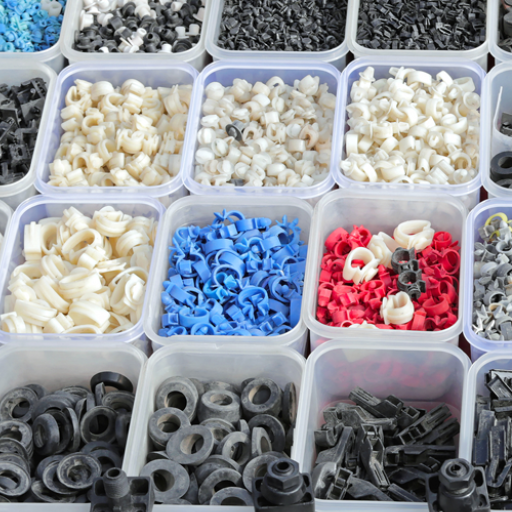
ABS has exceptional strength, durability, and price modulation among plastic materials. The Dimensional Stability and Impact Strength of ABS are at low prices, while polycarbonate provides high Impact Strength at a high price. ABS outmatches PVC in that it has the potential to withstand elevated temperatures and looks better, therefore enabling it to be used for both aesthetics and structure. While materials such as polyethylene have a higher range of chemical resistance and flexibility, they do not have the surface finish and the body rigidity ABS has. These properties render ABS a good material to use in a wide range of manufacturing requirements and with good competitiveness.
ABS vs other thermoplastics: Pros and cons
Examples of every usefulness of this polymer, its strength-to-weight ratio, heat resistance, and ease of machining, have an edge over many thermoplastics. It doesn’t have the flexibility and chemical Resistance of polyethylene, but it has high rigidity and a good faux surface, making it best for structural parts and consumer products. Despite lower impact strength and thermal durability, ABS is cheaper to manufacture and easier to work with than polycarbonate. Lastly, while polyvinyl chloride is excellent for sour and flame resistance, ABS is more potent and appears better, making it suitable for applications that have to look good and perform well.
Comparing material properties: ABS and alternative plastics
ABS (Acrylonitrile Butadiene Styrene) is a thermoplastic polymer with a good combination of mechanical strength, rigidity, and surface finish. While it has lower impact and heat resistance, making it undesirable in high-stress or high-temperature applications, ABS is more affordable than polycarbonate and easier to process. On the contrary, materials such as PVC (Polyvinyl Chloride) are excellent in having great chemical resistance, flame retardancy, and waterproofing but lack the strength and the relatively low molding technology that fabrics such as ABS possess. In addition to that, Polylactic Acid (PLA), which is often referred to as an environmentally friendly plastic, is biodegradable. However, it has lesser toughness and heat-resistant properties; therefore, it is not applicable for heavy-duty applications, which, when compared, does have the required properties. For a final note, the selection between ABS and other options then depends on the need of the application, whether that be cost, strength, or even environmental gain.
What are the advantages and disadvantages of using ABS plastic?
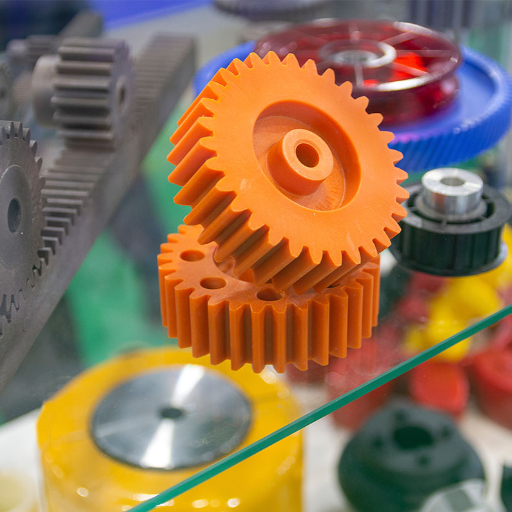
Driven by its excellent impact resistance, durability, and ease of mold, ABS plastic has become popular in various applications, from automotive to electronics. In addition, the material is light in weight and relatively inexpensive, thus offering much room for creativity in design. There are, however, notable demerits of ABS. The environmental concern stems from the fact that it is made from non-renewable fossil fuels and is non-biodegradable, thus making it worse for the environment than alternatives such as PLA. Also, high temperatures are not good with ABS, so it tends to give off harmful fumes when burnt, which can be challenging in some industries. It all comes down to trade-offs in this case, whereby the practical aspects of functionality have to be weighed against environmental and safety concerns.
Benefits of choosing ABS for various applications
ABS (Acrylonitrile Butadiene Styrene) is one of the most widely used polymers in many industries due to its strength, durability, and ease of use. Its impact resistance is one of the material’s most significant advantages, particularly in use for parts of vehicles such as dashboards and bumpers where pressure and stress are very likely to be present. ABS is also very versatile due to its high degree of machinability and compatibility with many processes, such as injection molding and 3D printing.
As we all know, this setting is particularly challenging. I focused on promoting ideas where ABS has minimum visible impact and emphasized other opportunities to support this community. Moreover, it would be interesting to see how the ongoing discussion regarding the meaning of “controlling the spread of flame” evolves. One point of consensus was AB’s focus on invention and innovation, as even illustrious predisposed to such weaknesses.
Limitations and potential drawbacks of ABS material
Within its application range and possessing its usefulness, the ABS material can be said to have its downsides. One major disadvantage is that intense UV light and weathering do not suit it well; exposing the material outdoors without treatment will discolor and degrade it over a certain period. Moreover, it is another fact that ABS material has a lower melting point than thermoplastic materials, which demotes its use in cases when temperatures are lower. It’s also susceptible to chemicals that can corrode or damage the material, including solvents and acids. Environment cautions are also raised here since the material is not biodegradable, and when made, it uses oil-based materials. The material is not a major contributor to pollution or waste, but the recycling processes are not as efficient. When considering the application of the ABS material, it is essential to note all of these factors carefully.
How is ABS plastic processed and manufactured into products?
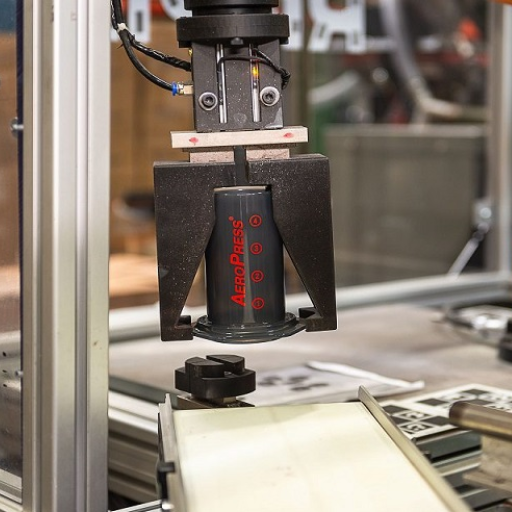
This thermoplastic polymer, also known as acrylonitrile butadiene styrene, is one of the most widely used plastics in the world. It is most commonly seen in industries that classify it as a thermoplastic, including packaging, automotive, consumer products, and construction. Three primary methods are effective for producing products from ABS, including 3D printing, injection molding, and extrusion molding. A wide range of 3D printers are currently available on the market. Still, the most detailed ones can be used to create industrial forms of various substances, including metal and plastic. However, extrusion and injection molding are also practical when focused on mass production. Injection molding, for example, enables the production of significant intricate components with tight tolerances while using high production volumes. With extrusion, a die creates long forms, such as sheets or pipes, and even 3D printing, in which the filament is heated and deposited in layers.
Injection molding techniques for ABS plastic parts
According to many researchers, various factors impact the quality of formed adhesion between ABS parts, including exposure to mechanical forces during injection and molding. To the numbers, injection molding absorbs more energy than other extrusion or 3D printing forms. The rate at which the material is processed would depend on the temperature and the thickness, within the general range of 200 to 240 degrees. Ultimately, the temperature must always be maintained between 50 to 90 degrees, which will help with proper cooling. Otherwise, the outcome would hinge on finding the perfect pressure while compensating for numerous complexities.
One primary consideration when using the injection molding process is ensuring the ABS resin is adequately dried, as too much moisture will adversely affect the surface and mechanical properties of the finished product. The resin should dry at 80 degrees Celsius for two to four hours before molding. Furthermore, how the molds are constructed is critical to producing elements free from defects. Wall thickness is uniform, corners well rounded, and draft angles are sufficient to lessen the warping sinking marks and other deformities. Suitable venting is also essential to expand air and smooth surfaces in the mold.
These methods are essential in enhancing production efficiency while preserving the plastic ABS’s strength, impact resistance, and dimension retention. Quality ABS components designed for automotive, consumer electronics, and industrial applications will always be manufactured by following these requirements.
Extrusion processes for ABS plastic sheets and profiles
The extrusion activity of ABS plastic comprises heating and melting away the ABS pellets or granules, which are then extruded through a mortar to create sheets or outlines of set dimensions. Such critical parameters as barrel temperature, screw speed, and die geometry must be maintained to provide the required thickness and smoothness of the end product. In most cases, using different grades of ABS necessitates using barrel temperatures within the range of 190°C to 230°C. Quenching, which is essential, is usually accomplished with either air or water spraying systems to achieve geometric stability and minimize internal strains. The securing of calibration after extrusion enables the finished product to be suitable for industrial, automotive, and consumer applications, with emphasis placed on strength and reliability characteristics.
Is ABS plastic recyclable and environmentally friendly?
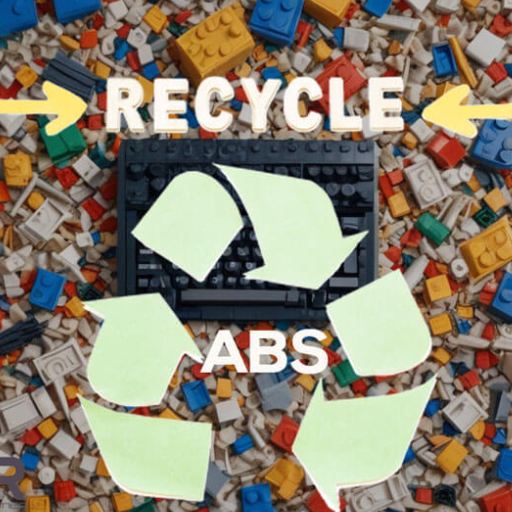
The benefit of ABS for the environment depends on how it is disposed of, as it can be recycled. It can be recycled into different products, saving resources and reducing waste. ABS, however, is not readily biodegradable, meaning if discarded and not looked after, the material can last for a long time in the environment. This is only the case if proper recycling procedure is not followed. Therefore, sound collection systems and facilities for recycling ABS are required that do not dispose of it in landfills. This will allow the plastic to be reused, and while this is a good practice, its implementation across the board for the responsible production and disposal of ABS must come first.
Recycling methods and challenges for ABS plastic
When a new product is being produced for ABS, there is no need for virgin materials as it can be melted down into recycled pellets, meaning the process for this form involves shredding, washing, and, lastly, melting the plastic, which works as an excellent alternative. It is considered a chemical form of recycling for melting down ABS pellets into monomers and then repolymerizing them into high-quality ABS; however, it is not the most popular. This can lead to the recycled material having nearly the same properties as the original, but there is a cost and an energy price that needs to be paid for this.
The issue of contamination, primarily by additives or mixed plastics, constitutes a significant obstacle to the recycling of ABS and can render the recycled material of lesser quality and functionality. As a result, effective sorting and pre-processing systems are necessary to preserve the purity levels in the recycling stream. Moreover, not all ablative systems can recycle ABS, thereby hampering the efforts that complement the general recycling program. Another complementing concern is the potential thermal degradation of the material after being subjected to multiple recycling processes, rendering it unsuitable for high-performance use. The variance status gaps include addressing technological processes and infrastructure issues and improving consumer education in handling and separating ABS plastics.
Environmental impact and sustainability considerations of ABS
Despite the widespread use of ABS in various applications, the environmental cost remains a concern. From an ecological angle, ABS is plastic produced from non-renewable fossil fuels associated with significant greenhouse gas emissions. ABS is also non-biodegradable and highly durable, further compounding the growing plastic pollution problem in natural ecosystems and landfills. Efforts to recycle ABS help reduce some concerns, but pollution and recycling private sector facilities limit the scope of benefits. Therefore, improvements to the technologies used for recycling, more use of recycled ABS, and the development of other materials are the steps that should be focused on to reduce the pollution associated with ABS.
References
Acrylonitrile butadiene styrene
Frequently Asked Questions (FAQ)
Q: What are the main applications of ABS plastic?
A: ABS plastic is commonly used in many applications due to its versatile properties. Some of the primary uses of ABS plastic include automotive parts, consumer electronics housings, kitchen appliances, plastic toys, and 3D printing filaments. Its durability, impact resistance, and ability to be molded into complex shapes make it a popular choice for many industries.
Q: What are the benefits of using ABS plastic?
A: ABS plastic offers several advantages, including high impact resistance, good chemical resistance, and excellent dimensional stability. It is also inexpensive and plentiful, making it cost-effective for mass production. ABS has a low melting point, which makes it easy to process using plastic injection molding or plastic extrusion techniques. Additionally, ABS parts can be produced with tight tolerances, making them suitable for precision applications.
Q: Are there different grades of ABS plastic available?
A: Various grades of ABS plastic are available to suit different applications. These grades can be tailored to enhance properties such as heat resistance, impact strength, or chemical resistance. Common ABS grades include general-purpose, high-impact, and flame-retardant ABS. The grade choice depends on the final product’s intended use and required performance characteristics.
Q: What are the disadvantages of ABS plastic?
A: While ABS has many advantages, it also has some limitations. Compared to some other engineering plastics, ABS has low heat resistance, which can limit its use in high-temperature applications. It is also susceptible to degradation from prolonged exposure to UV light and certain chemicals. Additionally, ABS is not biodegradable, which can concern environmental sustainability.
Q: Is ABS plastic toxic or safe for use?
A: ABS plastic is generally considered safe for use in most applications. It is non-toxic in its solid form and does not leach harmful chemicals under normal conditions. However, when ABS is heated to very high temperatures during processing or if it burns, it can release potentially toxic fumes. Following proper handling and processing guidelines is essential to use ABS plastic safely.
Q: How is ABS plastic made?
A: ABS plastic is polymerized, combining three monomers: acrylonitrile, butadiene, and styrene. The resulting ABS polymer is then typically processed into pellets or granules. These can be further transformed into finished products through various manufacturing methods such as injection molding, extrusion, or 3D printing. The specific ratio of the monomers can be adjusted to achieve different properties in the final ABS material.
Q: What are the key properties of ABS plastic?
A: ABS plastic properties include high impact resistance, good toughness, and excellent dimensional stability. It has a relatively low melting point, making it easy to process. ABS also offers good chemical resistance to many typical household and industrial substances. It can be quickly colored and maintains a glossy surface finish. These properties make ABS a versatile material suitable for various industry applications.
Q: Can ABS plastic be recycled?
A: Yes, ABS plastic can be recycled. It is a thermoplastic, which means it can be melted and reformed multiple times without significantly degrading its properties. Many ABS products, especially electronic housings, are marked with recycling codes to facilitate proper sorting and recycling. However, the recycling process for ABS is not as widely established as for some other plastics, and the recycled material may have slightly different properties compared to virgin ABS.

